The current-voltage graph for a given speciment at two different temperatures T1 and T2 are shown in the figure. Is the specimen ohmic ?
(b) At which temperature resistance is greater ?
( c) Which temperature is higher ?
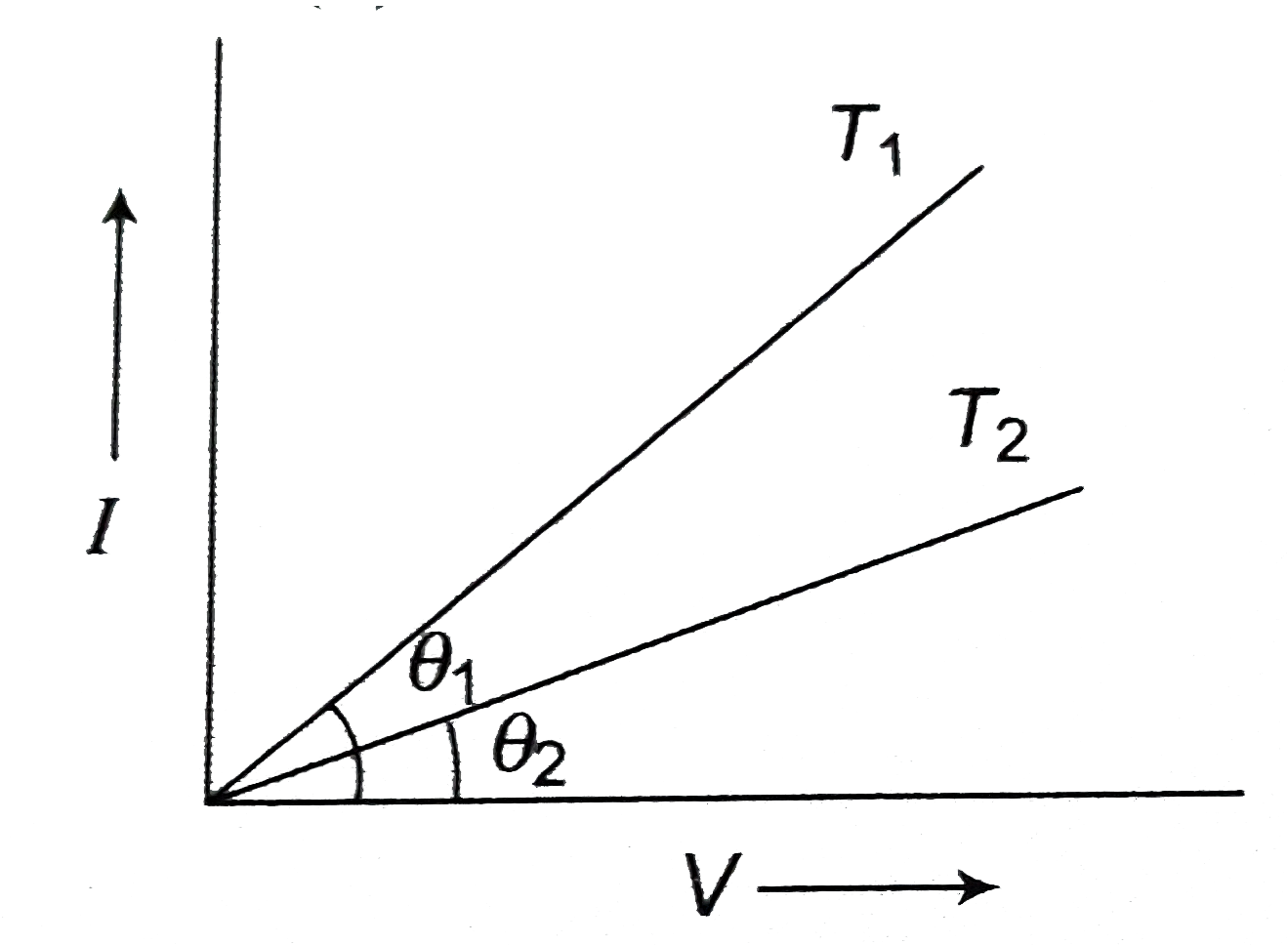 .
.
(a)Since I−V graph is linear i.e., VαI, the specimen is ohmic.
(b) The slope of I−V gives reciprocal of resistance.
R=VI=1tanθ
θ1>θ2 i.e., tanθ1>tanθ2 so R1<R2
At temperature T2, resistance is greater.
( c) R2>R1,T2>T1
Resistance increases with temperature.
Topper's Solved these Questions
Similar Questions
The current - voltage graphs for a given metallic wire at two different temperatures T1andT2 are shown in the figure.
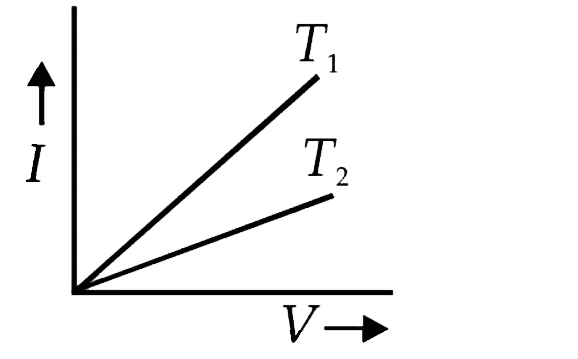
The temperature T2 is greater than T1.
View SolutionThe current-coltage graphs for a given metallic wire at two differenct tempeature T1 and T2 are shown in the figure. Which one is higher, T1 or T2
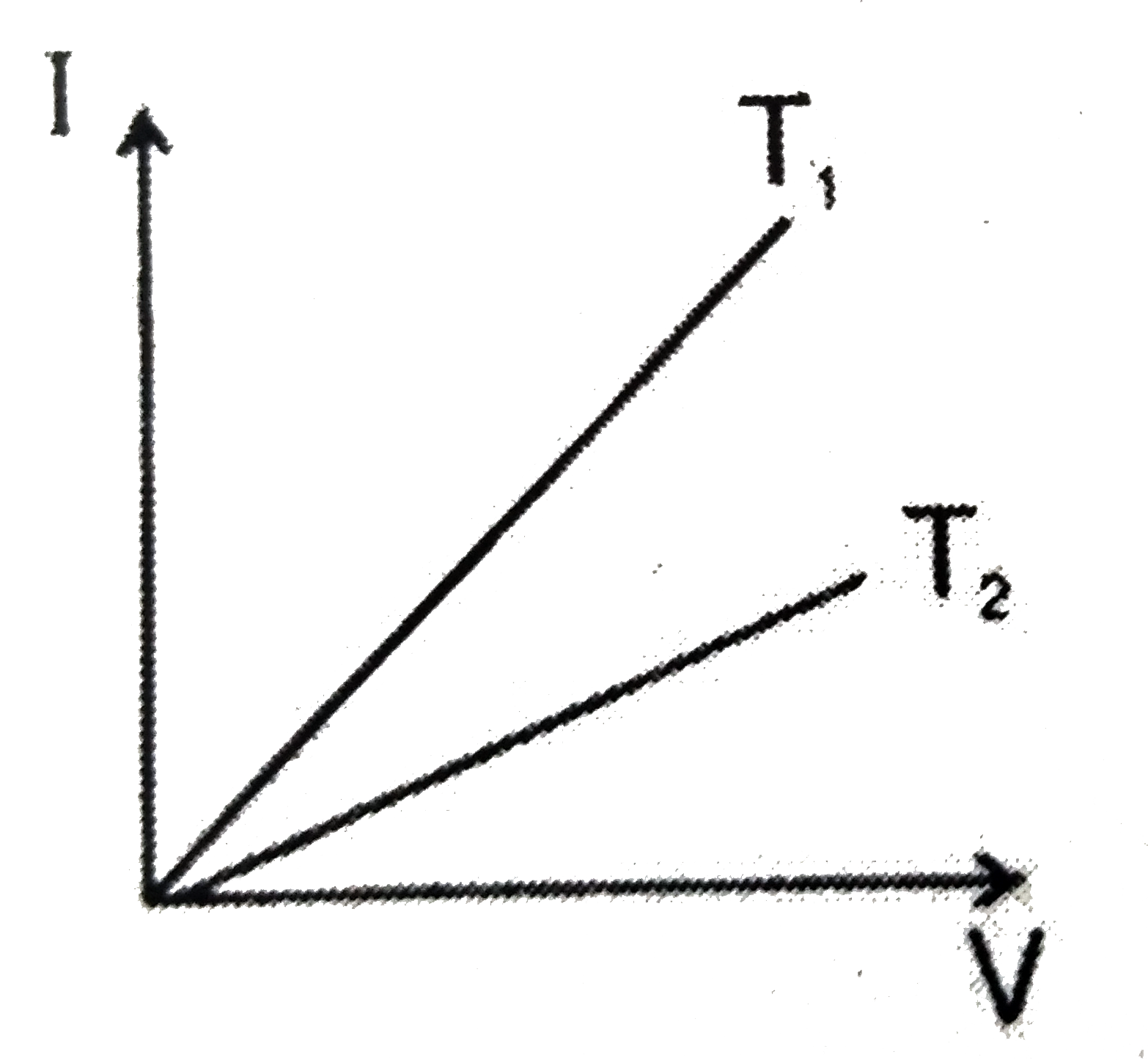
View Solution
Knowledge Check
The current (I) and voltage (V) graphs for a given metallic wire at two different temperature (T1) and (T2) are shown in fig. It is concluded that
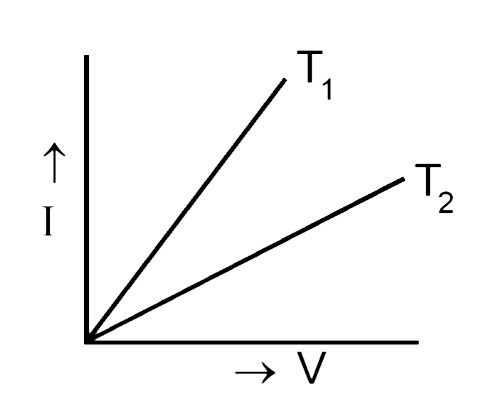 AT1=T2BT1>T2CT1<T2DNone of these
AT1=T2BT1>T2CT1<T2DNone of theseThe current (I) and voltage (V) graphs for a given metallic wire at two different temperature (T1) and (T2) are shown in fig. It is concluded that
 AT1>T2BT1<T2CT1=T2DT1=2T2
AT1>T2BT1<T2CT1=T2DT1=2T2The current I and voltage V variations for a given metallic wire at tow different temperature T1andT2 are shown in the figure. Then which one of the following is correct
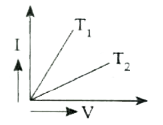 AT1>T2BT1<T2CT1=T2DT1=2T2
AT1>T2BT1<T2CT1=T2DT1=2T2
The current voltage graphs for a given metalic wire two different temperature T1 and T2 are shown in figure The temperature T2 is greater than T1. Is this statement true or false?
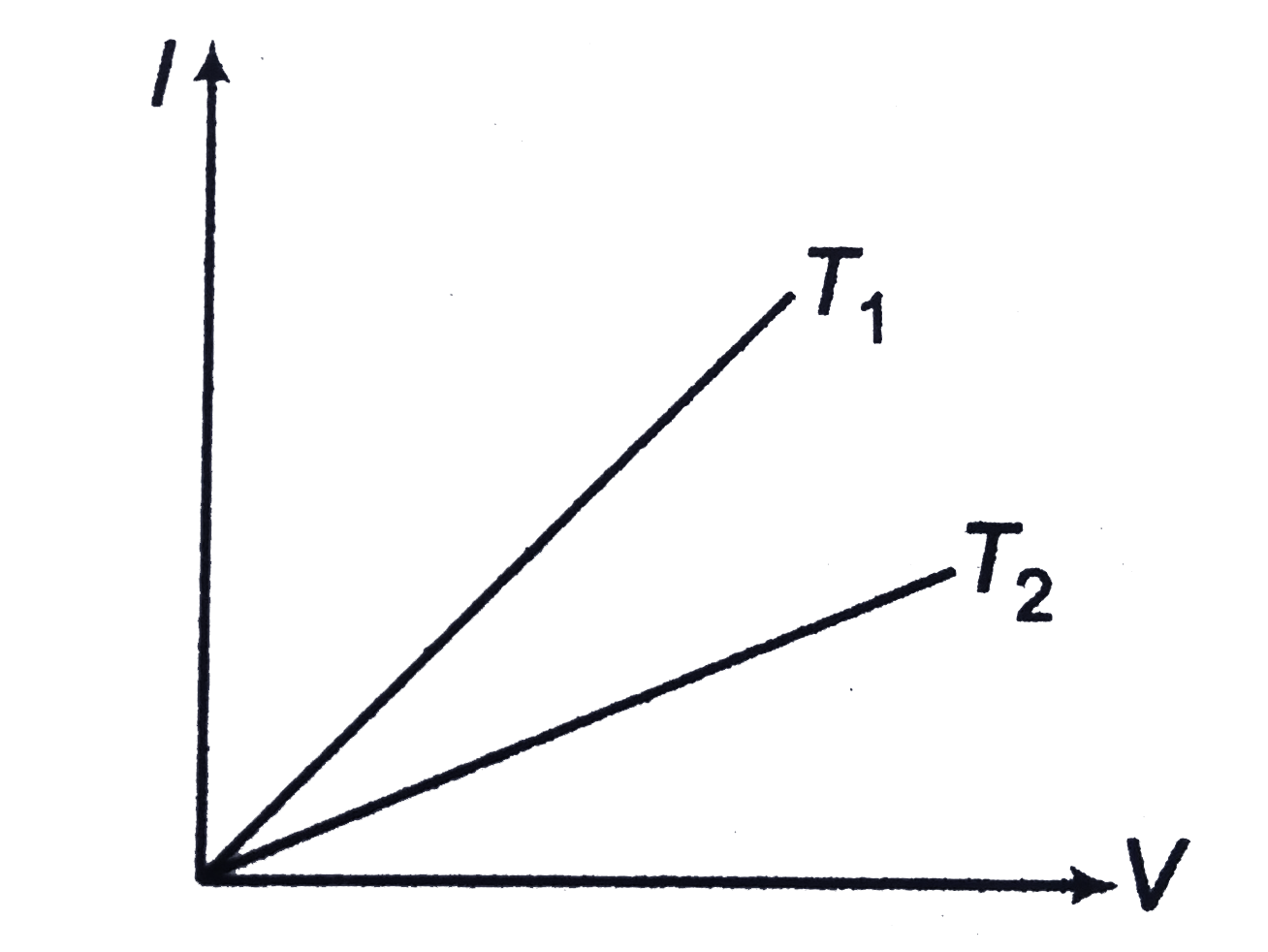
View SolutionI-V graph for a metallie wire at two different tempearture, T1andT2 is as shown in the figure. Which of the two temperatures is lower and why ?

View SolutionThe graph of (xm) vs P at two different temperature T1 and T2 is [where T1>T2]
View SolutionThe voltage V and current I graph for a conductor at two different temperatures T1 and T2 are shown in the figure. The relation between T1 and T2 is
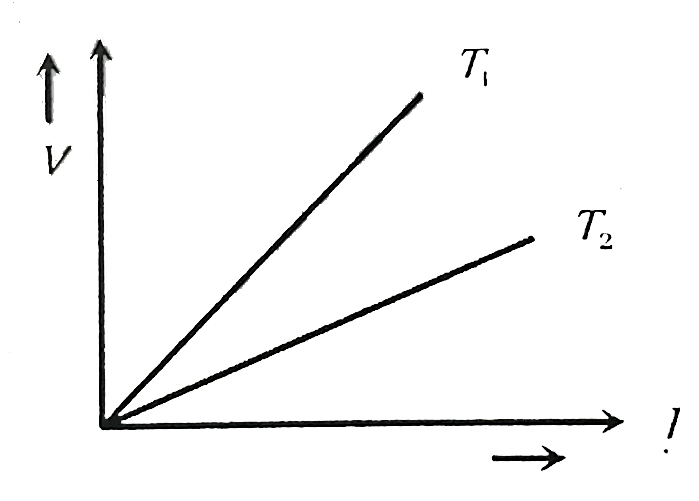
View SolutionThe voltage V and current I v graphs for a conductor at two different temperatures T1andT2 are shown in the figure. The relation between T1andT2 is
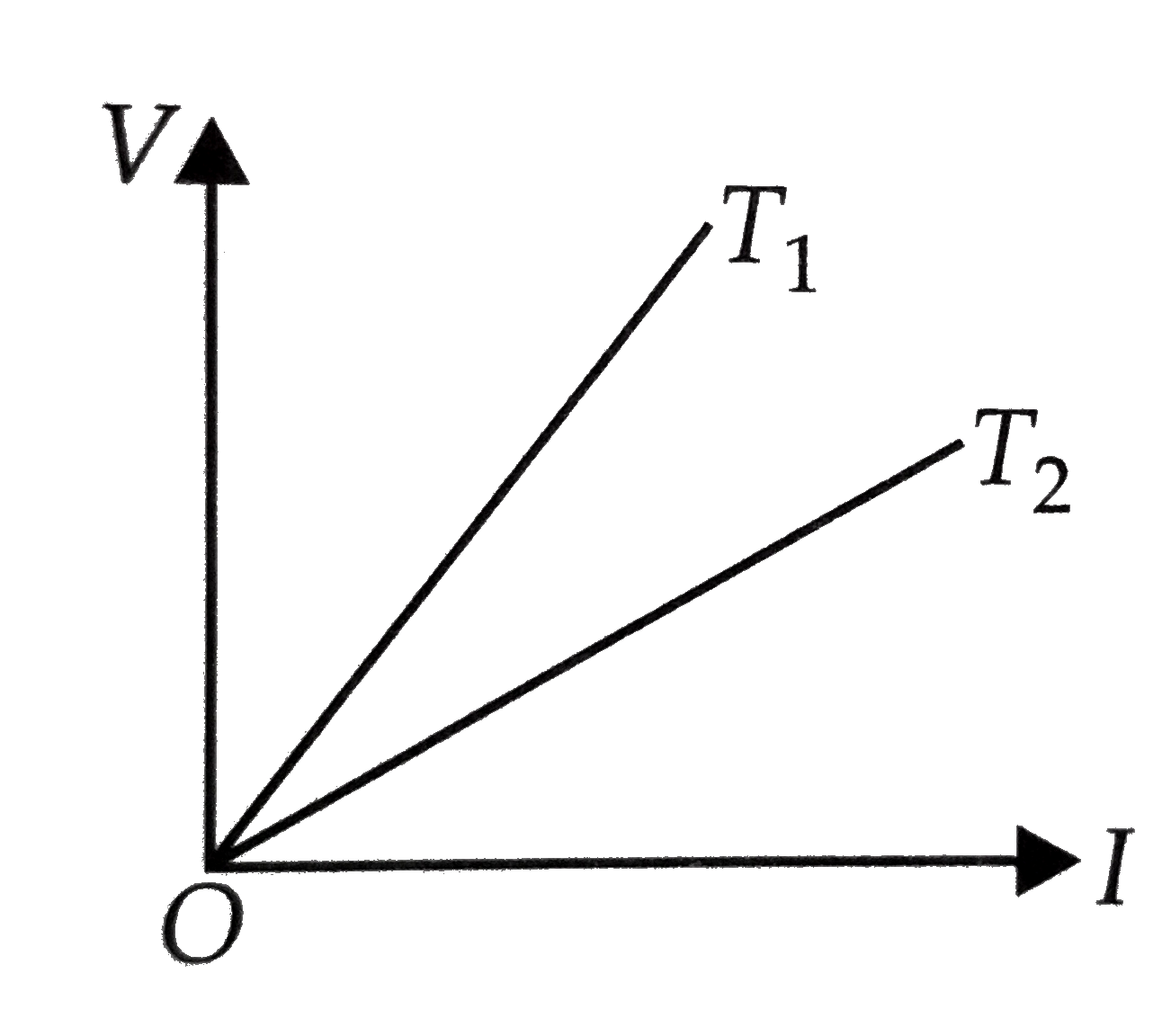
View Solution